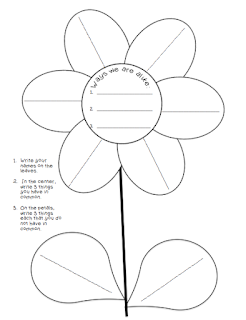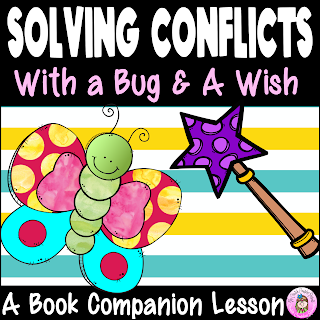Embracing Diversity by Respecting Differences
Hey everyone, I'm thrilled to share with you an amazing friendship lesson we had recently. It was time well spent learning about the magic of growing friendships and embracing diversity.
Friendship is all about respecting each other's differences. It's about celebrating the unique qualities that make each of us special. That's why I turned to Julia Cook's fantastic book, "The Judgmental Flower" to share with my students and illustrate this concept.
To kick off our friendship adventure, I started with an engaging activity. I read out sentences and asked my students to stand up if the sentence applied to them. Here are a few examples of the sentences that got everyone on their feet:
“If you have curly hair, stand up.”
“If you like to dance, stand up.”
“If you have freckles, stand up.”
The Blossoming Book
After this lively warm-up, we listened to the story of "The Judgmental Flower” which sparked a meaningful discussion about treating others who are different from us. We talked about why it's never okay to treat someone differently or meanly based on their unique qualities. Together, we brainstormed awesome ways to be respectful towards others and explored how effective communication plays a vital role in understanding one another. It was like watering the seeds of empathy and kindness in our friendship garden.
Petal Power
We then jumped into an exciting game called "Find the Flower." I displayed a variety of vibrant flowers on the board. To add some mystery, I had a deck of cards with the same flowers. I picked a card and held it close to my heart, challenging my students to communicate with me. They had to ask clever questions about my flower, using their communication skills to guess which numbered flower I had chosen. It was like we were detectives on a mission! This game sparked a valuable discussion on how communication is more than just talking—it's about truly listening and understanding one another.
Next, it was time to find our "petal pals." I distributed flower cards to each student, and they embarked on a quest to find their partner with the matching flower. The room buzzed with excitement as they connected with their petal pals. Once they found their perfect match, they teamed up to complete a "Friendly Flower" sheet. I loved witnessing their blossoming communication and collaboration.
Sowing Seeds of Inclusivity
By the end of our lesson, my amazing students achieved many benefits:
- They became experts at identifying both the similarities and differences they have with their peers. This knowledge helped them appreciate the unique qualities that each person brings to our friendship garden.
- They understood and embraced the concept that every individual is special and unique. We celebrated our differences like a garden bursting with diverse, vibrant flowers.
- Their communication skills bloomed like never before! They discovered the power of effective communication, including listening attentively and understanding different perspectives. These skills became the secret ingredient to nurturing strong and lasting friendships.
- Most importantly, they developed a genuine appreciation for their differences. They saw firsthand how our diverse qualities make our friendship garden more beautiful and inclusive.
Bonus Blossoms
Now, here's a bonus suggestion for you to try out. Invite students to create their own friendship flower garden. Let them draw and describe their unique qualities on flower petals. They can then display their gardens in the classroom, reminding us all of the beauty that lies in our diversity.
So let's continue nurturing friendships, celebrating diversity, and sowing the seeds of inclusivity. Together, we can create a garden where every flower is valued, respected, and cherished. Keep shining brightly, my fellow gardeners of friendship!








































